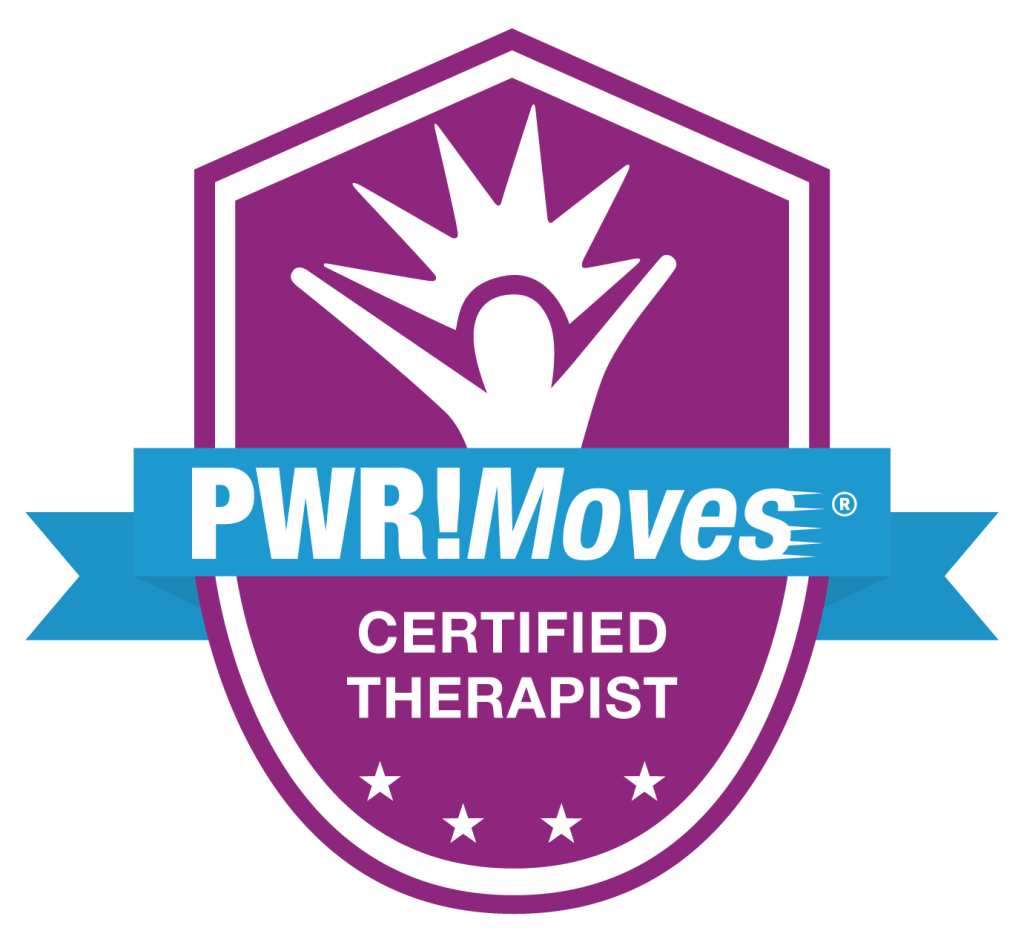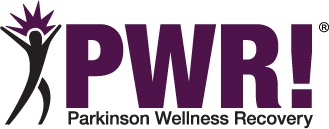PWR!Moves® Therapist Training and Certification

Translating Research into Exercise4BrainChange Approaches for Individuals with Parkinson Disease: Real World Rehabilitation and Community Implications
Develop and prescribe comprehensive Exercise4BrainChange® programming to address multiple symptoms and personalized goals for all levels of disease severity, fitness and co-morbidities for optimal benefit. They offer focused education, problem solving and coaching to empower and overcome barriers associated with Parkinson disease.
For Upcoming Classes and Courses, please visit our registration page here.
Click Each Topic For More Information
Course Description
Course Objectives
Course Schedule
Course Description
Recent advances in basic and clinical science research suggest exercise and learning approaches may protect, repair, and optimize function in persons with Parkinson disease (PD). To be effective, proactive rehabilitation paradigms are needed that deliver ongoing programming for life, starting at diagnosis, and that are guided by the essential principles of learning and neuroplasticity. These research also suggest two types of exercise programs are essential to trigger brain health and repair mechanisms – vigorous aerobic exercise and skill acquisition (targeted practice to learn a new skill or relearn an old skill). These two essential “physiological tools” may even work best when performed simultaneously.
Participants will learn to implement a flexible PD-specific skill acquisition approach called PWR!Moves®. Each of the Basic4 | PWR!Moves (UP/ROCK/TWIST/STEP) targets skills shown by research to become impaired in PD and that interfere with everyday mobility (antigravity extension, weight shifting, axial mobility, transitions). Each of the Basic4 | PWR!Moves requires the high effort training of bigger and faster movements in multiple postures (prone/supine/all 4’s/sitting/standing). Depending upon how they are performed (sustained, repetitive, sequentially), they can differentially target the primary symptoms of PD (bradykinesia/rigidity/incoordination). The Basic4 |PWR!Moves exercises provide for the repetition and specificity of training for people with PD as they can be performed in any position, scaled up/down across disease severity, integrated into function/ADL/lifestyle, implemented across disciplines (OT/PT/SPL) and settings (therapy/community), and reinforced in other research exercise programming (treadmill, cycling, pole walking, yoga, boxing, dance, Tai Chi).
Participants will also be introduced to a learning-principled framework called Exercise4BrainChange® to guide clinicians in HOW to implement essential principles of learning and neuroplasticity identified in the literature to real world practice. Each of the constructs is founded upon research in the fields of exercise science, motor control, and motor learning. The Exercise4BrainChange framework applied to PWR!Moves allows for the development of a comprehensive PD-specific approach that can target the multiple symptoms of PD. Participants will have the opportunity to practice PWR!Moves incorporating the Exercise4BrainChange techniques while getting feedback from PWR! Faculty. They will also watch live demos of PWR!Moves progressions and treatment along with PWP volunteers and PWR! Faculty.
Video cases and an interactive format will be used to discuss treatment plan essentials, to introduce specific exercises and various progressions, and to illustrate the real world implementation of this framework across disease severity. Participants will be able to develop comprehensive neuroplasticity-principled PD-specific treatment plans that take into account other evidenced-based approaches, disease severity, symptoms, co-morbidities, preferred forms of exercise and activity, capacity for learning, and age.
The clinical translation of neuroplasticity-principled approaches for people with PD is dependent upon overcoming many challenges. Environments for learning are needed that embrace an atmosphere of empowerment, motivation, social enrichment, and FUNction! Regional networks of therapy professionals are needed to advocate for early assessment and intervention, ongoing exercise, enrichment, and coordination with existing community fitness resources and local Parkinson foundations. We will describe how a Model Community NeuroFitness Center for people with Parkinson disease may offer a potential solution through partnerships with healthcare systems and Parkinson Foundations for the delivery of early intervention and ongoing access for LIFE!
Course Objectives
Workshop attendees will be able to:
1. Summarize recent advances in basic and clinical neuroscience that have brought exercise to the forefront in PD as it relates to optimal brain function and skill acquisition.
2. Explain the significance of targeting progressive aerobic training as the foundation for optimal brain health/function.
3. Explain the significance of targeting the training of amplitude into function (PWR!Moves) as the foundation for a comprehensive PD-specific skill acquisition program.
4. Perform the Basic4 | PWR!Moves in 5 positions: floor prone/supine, all4’s, sitting, standing and relate each exercise to function/ADL.
5. Identify how each of the Basic4 | PWR!Moves target common PD-specific problems related to flexibility, strength, mobility, balance, and posture in different positions.
6. Demonstrate how PWR!Moves can be used to target the primary symptoms of PD bradykinesia, rigidity, incoordination.
7. Discuss how PWR!Boosts can be used to enhance performance and learning during a PWR!Moves progression.
8. Describe how each of the Exercise4BrainChange Practice Essentials can be manipulated during a treatment to promote optimal learning and neuroplasticity.
9. Develop a PWR!Moves progression to target common PD-specific problems related to mobility/function/ADL and adapt for comorbidities or greater disease severity.
10. Develop a PWR!Moves progression to target common PD-specific problems related to mobility/function/ADL and integrate modeling, mental imagery, voice, cues, instruction, and reward-based feedback to achieve optimal alignment, motor output (effort), and engagement.
11. Significance of the ability to implement PWR!Moves across settings (therapy/community), and reinforce them in other community research exercise programming (treadmill, cycling, pole walking, yoga, boxing, dance, Tai Chi).
12. Discuss specific exercise progressions using video cases to illustrate real world implementation of PWR!Moves and Exercise4BrainChange practice essentials across disease severity.
13. Be able to apply the Exercise4BrainChange framework while teaching a series of targeted basic whole body movement exercises (PWR!Moves) for individuals with different disease severity levels.
14. Discuss solutions to the translation of neuroplasticity-principled programming into rehabilitation and community, including PD-specific community neurofitness centers (PWR!Gym).
15. Discuss the unmet needs in PD rehabilitation and possible barriers/solutions to the translation of neuroplasticity-principled programming into rehabilitation and community settings.
Course Schedule
SAMPLE AGENDA:
Day 1 ~
7:30 AM: Registration
8:00 AM: Introduction to Parkinson Wellness Recovery (PWR!)
8:45 AM: Overview of Parkinson Disease (PD)
9:45 AM: Evidence for Exercise in Parkinson disease
10:30 AM: BREAK
[…]
2:30 PM: Basic4 | PWR!Moves Introduction PRACTICUM 1 – Skill Acquisition
[…]
Day 2 ~
8:00 AM: Optimizing Learning in PD
9:30 AM: Break
9:45 AM: PWR! Exercise4BrainChange Program Demo with PWP
[…]
1:15 PM: Developing Exercise4BrainChange Treatment Plans (Lecture with class)

Please send me the times and location and cost on the up coming certification classes.
Thank you
Upcoming classes and registrations can be found here. https://www.pwr4life.org/pwr-workshops/pwr-therapist/upcoming-pwr-therapist-workshops/
When is the next class for certification?
Upcoming classes and registrations can be found here. https://www.pwr4life.org/pwr-workshops/pwr-therapist/upcoming-pwr-therapist-workshops/